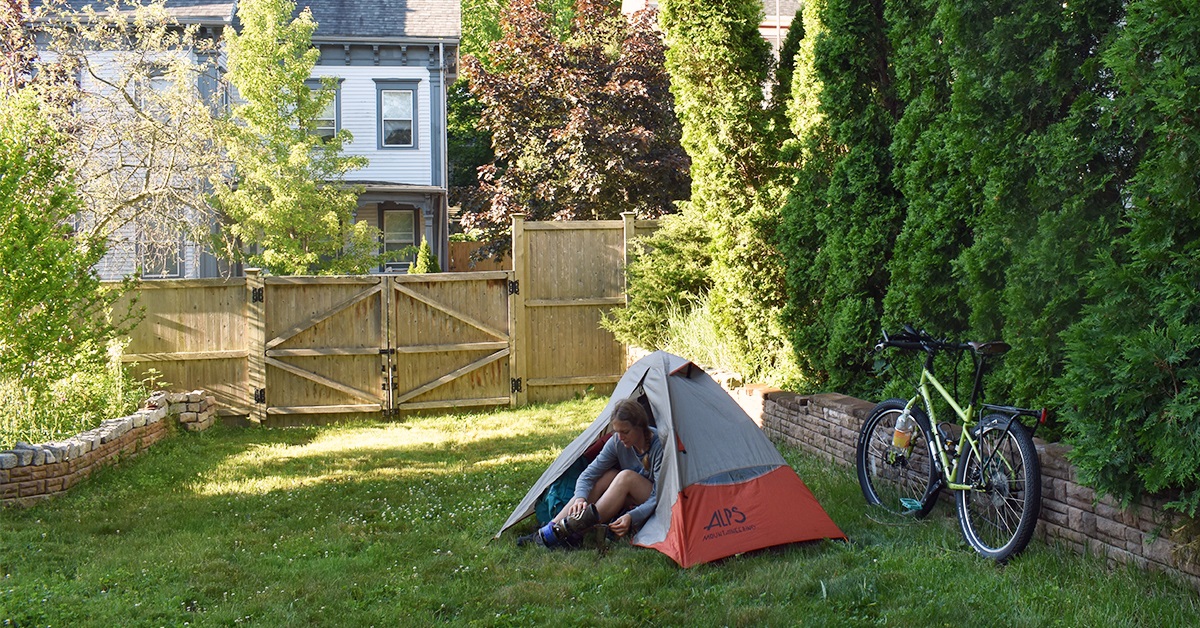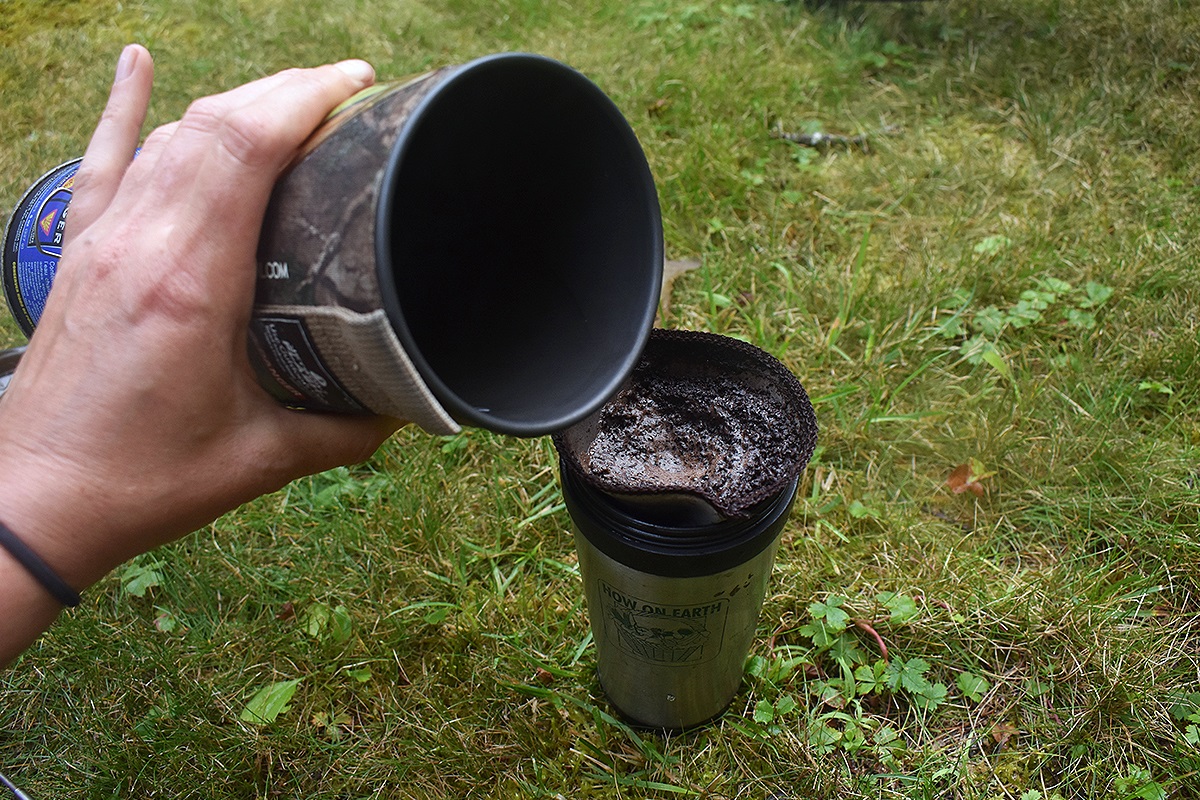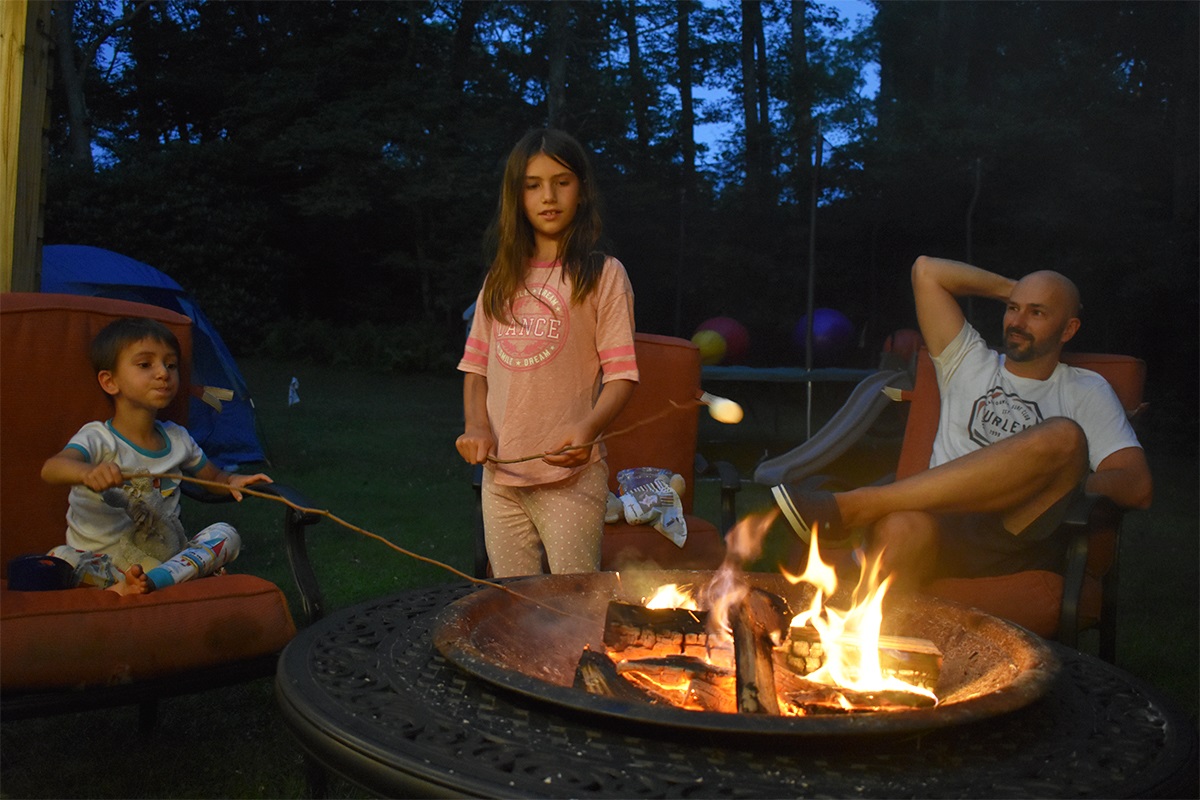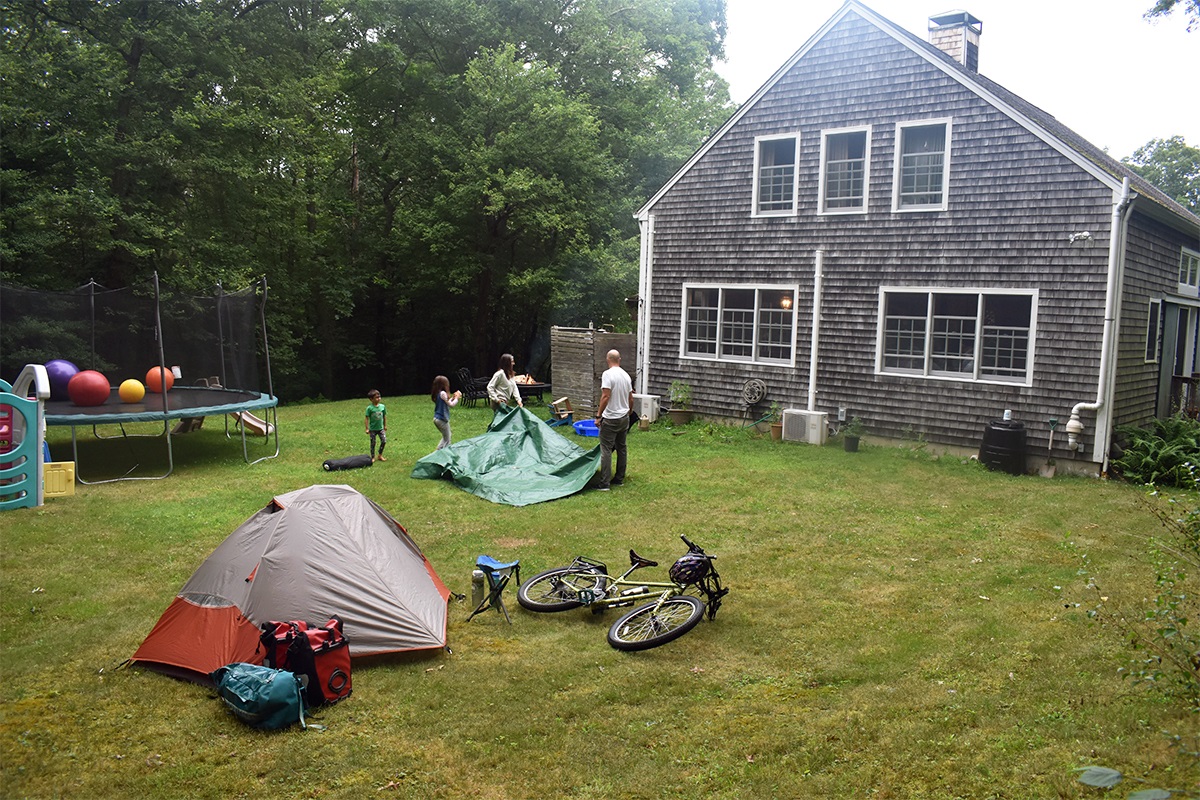How to Camp in Your Friend’s Yard During COVID-19
I love getting on my bike and pedaling off into the world. On my last long tour, I cycled 3,700 miles around eastern Canada and the U.S. By the time my partner and I got to Nova Scotia, I had worn out my brake pads so we stopped by Highland Bike Shop. The owner, Matt, was doing a million things at once — taking calls, fixing bikes, herding children, cleaning messes. His mechanic Steph squeezed me into the fray and sorted out everything I needed. Afterward, Mike invited us to camp at his house. My partner and I pedaled a few miles to his place and set up our tent on his lawn.
When people imagine long-distance bike tours, they often think of pristine campsites and mountain views. We got plenty of those on that trip, but I still swear that there’s nothing more magical than camping in a new friend’s suburban yard. The invitation to share trust and feel welcome is one of the classic elements of long-distance adventure cycling. I’ve camped in many people’s yards, and no matter how many times it happens, it still feels extraordinary.
When COVID-19 began circulating in the U.S., I spent a lot of time in quarantine. I canceled my trips, stopped going out, and kept to myself. I was lucky that my area remained open to outdoor exercise, so I was able to ride and walk outside.
Eventually, I got so desperate to see people that I pedaled to my friend Tyler’s house and camped in his yard. I pitched my tent on the septic mound in the back of the house, and we chatted from a distance. When it got chilly, he went inside and I shouted things at him from outside his window. This trip was so successful (for me, at least) that soon I started venturing out to other friends’ yards. Kayla and Nate hosted me outside their apartment in the city, and Cristy and Billy treated me to a beautiful evening with a campfire and marshmallows. These little journeys allowed me to socialize safely when I wouldn’t otherwise have been able to. And they reminded me that extraordinary adventures can still happen close to home.

My philosophy toward yard camping during COVID-19 is about total self-sufficiency. I pack in every item that I need and then pack everything back out again. I don’t go inside my host’s house or use any of their furniture or facilities. It’s possible that you could make agreements ahead of time about how to safely share food or use a water spigot or bathroom. I’ve just personally enjoyed the challenge of self-sufficiency, and my suggestions below reflect that.
Food And Beverage
If you’re camping for a single overnight, you have a whole lot of options for food. You could make yourself a sandwich, bring fresh ingredients to cook on a camp stove, or use a dehydrated food mix.
I usually like to keep things simple so I either make food ahead of time and bring it along, or I bring a stove and rehydrate my own “Farm Fresh Fast Food.” These are seasonal local foods that I prepare and dehydrate ahead of time. On my last trip, I enjoyed a dinner of homemade dolmas and Flower Power Water, and for breakfast, I rehydrated some homemade strawberries and cream steel cut oats.
Remember to bring enough water for drinking, cooking, and cleaning. You can also bring powdered drink mixes, tea, coffee, or alcoholic beverages. This is a great time for red wine or other drinks that are normally served at room temperature. If you really want a cold beer or juice, you can try chilling and insulating it. Just stick the cold can in a sock to collect condensation and stuff it into your extra clothes or sleeping bag. A can cozy (or “koozie”) is always useful too.
Over the years, I’ve gone through a lot of different methods for making coffee on the road. At the moment, I like my reusable coffee filter. I just put it in my mug, add coffee, and pour hot water on top. I heat water on a Jetboil camping stove. Alternatively, Jetboil has a French press accessory.

Bathroom Stuff
This is where lawn camping gets really interesting! When I camp on the lawn, I stay on the lawn. That means my tent doubles as my bathroom. I swear, this is not as gross or weird as it might seem. After all, climbers and alpinists do it all the time. So it’s actually “cool.”
For Number Two, my preferred method is to poop in a bag of leaf duff or sawdust. Then I pack it out and dump it in a composting toilet. If you don’t have access to a composting toilet, you could also just pack it out and dump it into a flush toilet. Important factor either way: when I say “a bag” I really mean double bag! This is not the time for leaks. An alternative to bags are small containers. My friend Lu swears by coffee cans.
If old bags and coffee cans feel too riffraff for you, you can always go pro with a wag bag or wag bag and portable toilet kit. And for car camping, I do enjoy my Luggable Loo.
I don’t think I really have to say this, but I will anyway: be discreet. Don’t whip out your wag bag in the middle of someone’s lawn. Do your business inside your tent or under your rain fly.
For pee, you can also go in a container and pack it out. Or you can invest in a portable urinal or other pro pee device. If your host is comfortable with you peeing in their bushes, that can also be an option. Personally, I never leave home without my pStyle. The pStyle is a plastic funnel that diverts urine away from your body. It allows women, non-binary folks, and trans men to stand up and pee while fully clothed. Just choose a bush, unzip your pants, and pee free into your pStyle!
Again, I hope I don’t have to say this, but I will anyway: be discreet and be respectful. Ask before you pee in anyone’s bushes. Don’t expose yourself in public places. And please do not be the person who gets me in trouble for writing this article!
Shelter and Camp
After a decade of bike touring without a phone or GPS, I still forget that it’s possible to check the forecast. I usually plan overnight trips without looking at the weather and bring rain gear just in case. I think it’s probably a lot more practical to just check the weather and plan to camp on clear nights. But no matter how clear the forecast is, always bring rain gear and extra layers.
A few comfy luxuries also make the trip more enjoyable. I love my folding stool, and I also bring a small blanket for picnicking. If it’s cool outside, I always take my coziest onesie pajamas to sleep in. My friend David likes to bring a bow tie that matches his camping gear. You do you.

I definitely recommend doing a full trial of all your gear in your own yard before moving on to anyone else’s. It could be awkward if you remember your tiger onesie and bow tie but can’t figure out how to put up your tent. If you don’t have a yard, you could start by camping out in your living room.
Hygiene and COVID Safety
Bring a face mask and wear it if you come within six feet of other people. Bring a bottle of hand sanitizer. Don’t go inside your host’s house or touch any of their things (unless you’ve agreed on how to do that safely). And for hand washing and bath time, don’t forget your biodegradable wet wipes! I’m always shocked at how clean I feel after taking a wet-wipe bath. If you’ve never tried it, I dare you to.

Direct communication is key. Be clear about boundaries and manage peoples’ expectations ahead of time. Listen closely to your hosts’ needs and comfort zones. Talk about how you will maintain social distancing and safety protocols. And then follow through with what you decided. Don’t be the person who pushes the boundaries, even if your friends seem cool with it. You are responsible for keeping the excursion safe, not your host. Always default to local regulations and recommendations for your area.
Embrace the Adventure
Adventure is about so much more than just going a long distance. It’s about the spirit of setting out into something new and unknown. It’s about the kindness of friends and strangers. And it’s about making the best of whatever situation you find yourself in. There’s a lot of adventure waiting for us close to home.


